If you're looking for a way to protect your concrete floor from damage due to moisture, you have come to the right place. Whether you're dealing with a new concrete floor or an existing one, moisture can be a major issue. Fortunately, there are some great options out there for moisture barriers that can help keep your concrete floor looking great for years to come.
Before purchasing any product, there are some important factors to consider. First and foremost, you need to think about the type of concrete floor you have – is it new or old? Does it have any cracks or other damage? These factors will influence the type of moisture barrier you choose. Additionally, you'll need to consider the environment where the concrete floor is located as this can also impact the performance of the barrier.
When it comes to selecting the best moisture barrier for your concrete floor, it can be helpful to ask some questions. For example: What is the best type of moisture barrier for my specific needs? How easy is it to apply the product? Will it be effective over the long term? Answering these questions will help ensure that you make an informed decision and choose the right product for your needs. So why wait? Protect your concrete floor from moisture damage today!
10 Best Moisture Barrier For Concrete Floor
| # | Product Image | Product Name | Product Notes | Check Price |
|---|---|---|---|---|
|
1
|
This product is ideal for providing a moisture barrier under flooring to prevent damage from moisture and mold.
|
|
||
|
2
|
DuoFoam is an affordable foam underlayment ideal for cushioning and blocking moisture for wood and laminate flooring.
|
|
||
|
3
|
This product is ideal for providing sound reduction, compression resistance and moisture protection for laminate flooring installation.
|
|
||
|
4
|
The product is ideal for providing cushioning and noise reduction under wood and laminate flooring.
|
|
||
|
5
|
It is ideal for use as an underlayment film for laminate floors to help prevent moisture damage.
|
|
||
|
6
|
This product is ideal as an underlayment for solid and engineered wood floors and luxury vinyl plank (LVP) installations.
|
|
||
|
7
|
The polyethylene sheeting is ideal for protecting surfaces from moisture, dirt, dust, and debris.
|
|
||
|
8
|
It is ideal for sealing concrete against water, vapor, and radon gas, while also providing basement waterproofing and radon mitigation.
|
|
||
|
9
|
It is ideal for providing a barrier between the subfloor and finished flooring to reduce sound transmission and improve moisture resistance.
|
|
||
|
10
|
It is an ideal underlayment for tile installation.
|
|
1. Moistureblock – Underlay Film, 6mil, 100 Sq.ft.
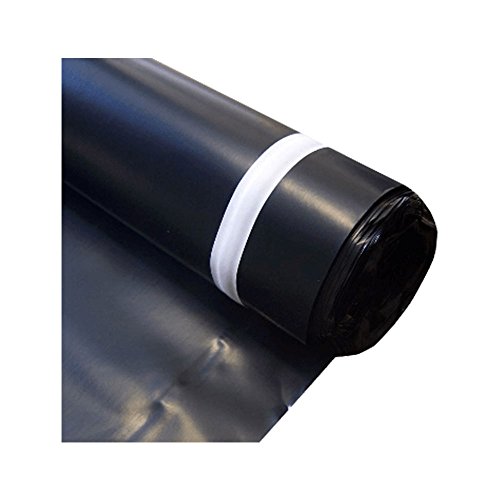
Introducing a high-quality underlayment to protect your wood or laminate floor from subsurface moisture and damage. Made with 100% polyethylene, this underlayment offers long-lasting moisture protection for your floors. The .006 film barrier ensures a strong and durable barrier against moisture.
Installation is made easy with the self-sealing adhesive tape, ensuring quick and hassle-free application. Simply roll out the film and tape all seams to create a strong and effective barrier. With its wrinkle/crease-free design, you won't have to worry about any noise or damage caused by wrinkles in the film.
The underlayment's easy-to-handle size of just 30 inches in width allows for effortless installation in small to large rooms. Its economical size ensures that there is no wasted plastic, making it a cost-effective and environmentally friendly option for protecting your floors.
2. Floormate: Dual-Purpose Foam Underlayment – 100 Sq Ft
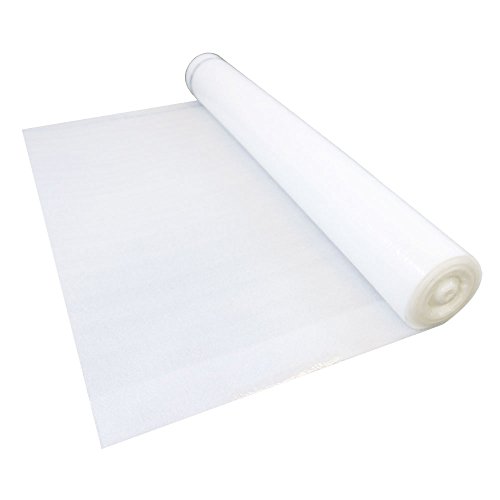
This versatile product is designed for use over all types of subfloors, including concrete, and any surface that requires moisture resistance. The underlayment is made of high-quality polyethylene foam, which not only provides excellent insulation but also offers exceptional durability. Its attached, durable polyethylene moisture barrier ensures the subfloor remains dry and protected from any potential moisture damage.
Measuring 3 ft. x 30 ft. 4 in. x .08 in., this underlayment is the perfect size for a variety of flooring projects. Its extended lip of film on one edge and self-seal tape on the opposite edge make installation a breeze. The extended lip of film ensures that the underlayment is securely anchored to the subfloor, preventing any shifting or movement. The self-seal tape allows for easy installation and ensures a tight, secure seal, eliminating any potential moisture penetration.
Whether you are installing hardwood, laminate, or any other type of flooring, this underlayment is the perfect choice. Its high-quality materials and exceptional design provide superior moisture resistance and insulation, ensuring that your flooring remains in top condition for years to come. With its easy installation process and durable construction, this underlayment is a must-have for any flooring project.
3. Silent Shield Laminate Flooring Underlayment – 360 Sq. Ft.
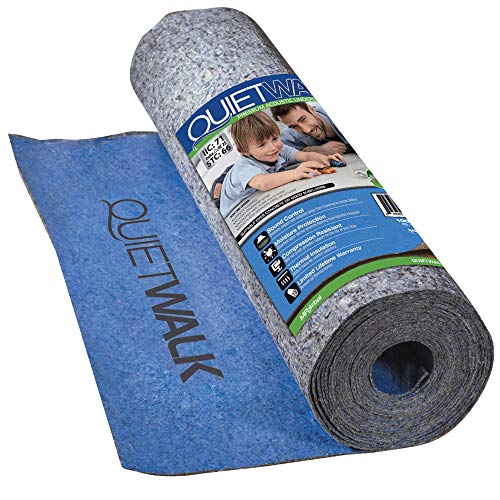
Looking for an ideal underlayment for your laminate, floating engineered, or luxury vinyl plank floors? Look no further than this product!
This underlayment boasts several features that make it an excellent choice for your flooring needs. For one, its recycled fibers absorb sound, preventing it from travelling to other rooms and making your floating floors sound more solid underfoot. Additionally, the dense recycled fiber structure supports the click-together mechanism, upholding its supportive configuration even under consistent traffic.
Another great feature of this underlayment is its moisture protection capabilities. The recycled fibers allow installation over concrete to breathe, managing vapors from becoming bulk moisture. The attached vapor barrier also protects the overlying floors from harmful moisture.
Furthermore, this underlayment is certified clean and safe for indoor air quality, with zero VOC's (Volatile Organic Compounds) or off-gassing from materials. It's also approved for in-floor radiant heat systems, allowing heat to permeate evenly while helping to protect the floor covering material from thermal shock. Warmth can be achieved with the Quiet Warmth Radiant Heat System.
Installation is a breeze as well. Simply roll out and join the seam. This underlayment can also be installed over wood or concrete subfloors. One roll can cover a whopping 360 sqft, making it a cost-effective and practical choice for any flooring project.
4. Roberts Serenity Foam Wood & Laminate Underlayment, 100 Sq. Ft. Roll
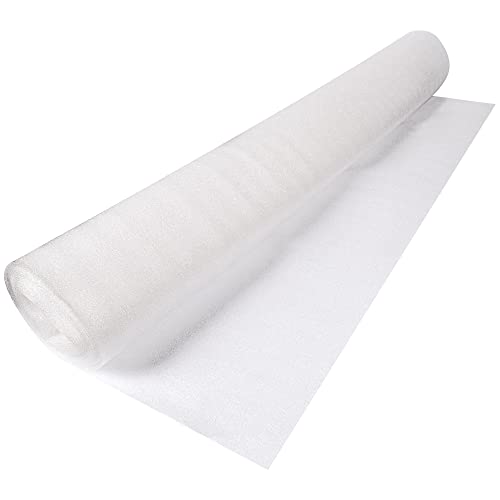
The product being presented is a high-quality flooring underlayment that offers an impressive coverage of 100 square feet. The roll measures 25 feet in length, 4 feet in width, and 3/32 inches in thickness, making it an ideal fit for wood subfloors.
Not only that, this underlayment is also versatile in its application. It can be used with concrete slabs, provided that you use the recommended Moisture Barricade (Item# 70-115, sold separately) to ensure optimal performance.
This underlayment is designed specifically for use under laminate and engineered wood flooring, making it a perfect choice for those who want to enhance the overall durability and longevity of their flooring. Additionally, it can be safely used over radiant heated floors, providing an extra layer of insulation and protection.
5. Moisture Shield For Laminate Floors
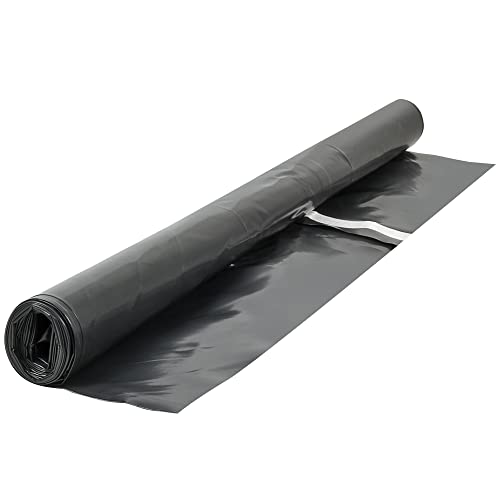
This durable polyethylene film is an essential element in protecting laminate flooring from moisture, ensuring a long-lasting and attractive finish. With a thickness of 6 mil, this film is built to withstand daily wear and tear, while its roll-to-unfold design covers an ample 10 foot by 12 foot area. It is recommended for use with standard foam underlayments, providing an added layer of protection against moisture and preventing unsightly damage to the flooring. This versatile product can be used with laminate flooring that already has a pre-attached underlayment, making it a convenient and hassle-free solution for homeowners and contractors alike. With its superior quality and easy-to-use design, this polyethylene film is an indispensable tool in maintaining a beautiful and functional laminate flooring system.
6. Wood & Lvp Moisture Barrier Underlayment
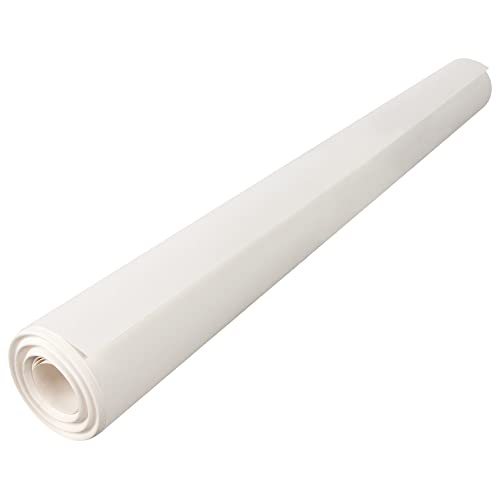
This product is designed to enhance the installation process of solid and engineered wood floors. It is suitable for both staple and nail down installations. The Silicone Moisture Barrier is a reliable solution that helps to reduce vapor flow without trapping moisture. It meets the perm ratings recommended by the National Wood Flooring Association, ensuring that it is a trustworthy option for your wood flooring needs.
The Silicone Moisture Barrier has been lab tested and approved for use with radiant heat systems, making it a versatile product that can be used in a variety of settings. This product comes in a convenient 31.5 in. x 76.25 ft., 200 sq. ft. roll, making it easy to work with. The 6 mil wet strength paper and silicone coating ensure that the Silicone Moisture Barrier will not fall apart during installation, providing peace of mind and a hassle-free installation process.
7. Frost King P1025/6w Polyethylene Sheeting, 10' X 25' X 6 Mil., Clear
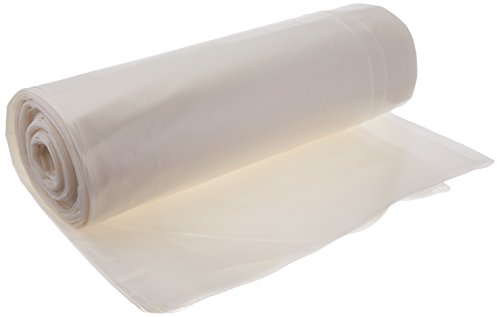
The versatile packaged plastic sheet offers numerous applications for household, garden, and garage use. Its durable and flexible material makes it an ideal option for covering and safeguarding furniture, appliances, and equipment from dust, dirt, and moisture.
In addition to protecting indoor items, the plastic sheet can also serve as a protective barrier for outdoor equipment and materials. It can be utilized for making storm windows and doors, temporary enclosures, boat covers, and even as a moisture barrier for plants and shrubs.
The lightweight plastic sheet is ideal for covering furniture, while the heavier weights are suitable for covering carpets, rugs, and hardwood floors. This makes it an ideal choice for DIY projects and renovations.
Whether you want to protect your belongings during a move or temporarily cover outdoor equipment, the packaged plastic sheet offers a reliable and cost-effective solution. With its versatile applications, it is a must-have item for any household, garden, or garage.
8. Radonseal+ – Basement Waterproofing & Radon Mitigation
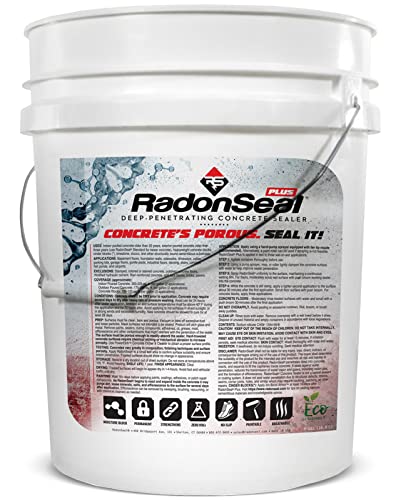
This product is a top-of-the-line solution for those looking to protect and strengthen their concrete surfaces. Its unique formula penetrates concrete up to four inches, internally sealing the matrix of concrete and blocking pores and capillaries to prevent water seepage, water vapor, and radon gas. It is perfect for use on basement floors, interior and foundation walls, slab-on-grade, indoor and outdoor poured concrete slabs and walls.
In addition to its sealing properties, this product also helps harden and strengthen concrete, reducing concrete dusting, efflorescence, damage caused by salts, de-icing chemicals, and freeze-thaw. This product does not trap moisture, making it an ideal solution for those looking for long-lasting protection.
The formula is eco-friendly and easy to apply, with zero VOCs, no odors, no solvents, non-toxic, and non-flammable. It is water-based and can be applied with ease.
This product is permanent and paintable, requiring no reapplication. It is resistant to hydrostatic water pressure and does not form a surface film, ensuring that there is no peeling or fading. The surface remains paintable, making it an excellent primer for epoxies, tiles, and overlay flooring.
This commercial-grade product has been trusted since 1997 and is backed by a money-back guarantee, giving customers peace of mind when they purchase. Overall, this product is an excellent investment for those looking for a high-quality, long-lasting solution to protect and strengthen their concrete surfaces.
9. First Step 630-Square Foot Roll Underlayment
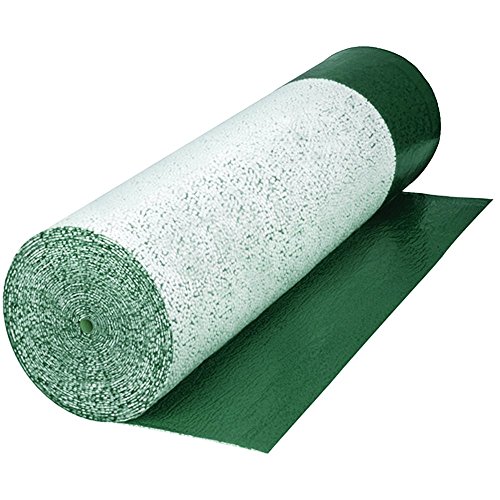
The First Step Premium 3-in-1 Underlayment, available in a 100 sq. ft. roll, is a versatile product that is specifically designed for use under floating laminate and engineered wood floorings. This product is ideal for use on concrete slabs and wood subfloors that are on or above grade. The underlayment offers a number of benefits, such as sound reduction, comfort, and the ability to level minor sub-floor corrections.
Measuring at 40 in. x 189 ft., each roll of First Step Premium 3-in-1 Underlayment provides a total of 630 sq. ft. of protection. The product features an adhesive strip and 4 in. overlap film for linking multiple rolls together, allowing for a seamless and secure installation.
The First Step Premium 3-in-1 Underlayment has been tested and has received a Sound Transmission Lost Test (STC) rating of 67 and Impact Sound Transmission Test (IIC) rating of 68. These ratings demonstrate the product's ability to effectively reduce sound transmission between floors, making it an ideal choice for multi-story buildings or areas where noise reduction is important.
Additionally, this premium underlayment has an R-Value of .40, which indicates its ability to provide insulation and increase energy efficiency. This feature makes the First Step Premium 3-in-1 Underlayment a smart investment, as it can help to reduce heating and cooling costs over time.
10. Fortifiber 70-195 Tile Underlayment Roll, 500 Sq. Ft., Brown
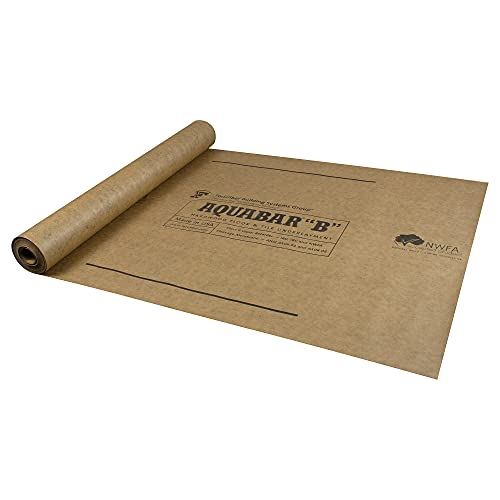
The Aqua Bar "B" is an exceptional underlayment for interior installations of ceramic, porcelain, or stone over cement board, plywood, or concrete. It can also be used for finished or unfinished wood floors over plywood or concrete. This product is the most commonly used under wood flooring, ceramic tile, and stone veneer or as a membrane on walls, counter-tops, and residential showers.
This sub-floor barrier is designed to slow moisture migration and help prevent buckling, cupping, and cracking. It is an extremely effective moisture vapor retarder for use in a variety of interior construction applications. With a 500 sq. ft. roll measuring 3 ft. x 167 ft., this non-reinforced 30/30/30 duplex type Grade "B" paper consists of two layers of Kraft paper laminated with asphalt.
Aqua Bar "B" is a reliable and durable product that provides excellent protection against moisture. Its moisture-retardant properties make it an ideal choice for use in areas with high humidity levels or where water exposure is common. It is easy to install, making it a popular choice among professional contractors and DIY enthusiasts alike.
By using Aqua Bar "B" as an underlayment, you can be confident that your flooring or wall installation will be protected from moisture damage. Its dependable moisture-retardant properties will help keep your floors and walls looking great for years to come. Choose Aqua Bar "B" for your next interior construction project, and enjoy the peace of mind that comes with using a high-quality, effective product.
Best Moisture Barrier For Concrete Floor FAQs
Are there any eco-friendly options for moisture barriers for concrete floors?
Yes, there are several eco-friendly options for moisture barriers for concrete floors. One popular option is to use a moisture barrier made from recycled materials. These materials can include recycled rubber or plastic, which are both durable and effective at preventing moisture from penetrating the concrete. Another eco-friendly option is to use a moisture barrier that is made from natural materials, such as clay or limestone. These materials are renewable and biodegradable, making them a great choice for those who are looking to reduce their environmental impact. Additionally, some companies offer moisture barriers that are made from plant-based materials, such as soybeans or corn, which are both renewable and biodegradable. Overall, there are many different eco-friendly options for moisture barriers for concrete floors, so it is important to do your research and choose the option that best fits your needs and values.
Can a moisture barrier be installed on an existing concrete floor?
Yes, a moisture barrier can be installed on an existing concrete floor. A moisture barrier is often installed to prevent moisture from seeping into the concrete and causing damage or mold growth. The process involves cleaning and preparing the existing concrete surface, applying a primer layer, and then applying the moisture barrier coating. The type of moisture barrier used will depend on the specific needs of the space and the level of moisture present. Some common moisture barrier options include epoxy coatings, polyurethane coatings, and penetrating sealers. It is important to ensure that the moisture barrier is properly installed and cured to ensure its effectiveness. Consulting with a professional contractor or installer can help determine the best moisture barrier solution for your specific needs and ensure proper installation.
How does a moisture barrier work to prevent moisture from penetrating a concrete floor?
A moisture barrier, also known as a vapor barrier, is a material used to prevent moisture from penetrating a concrete floor. The barrier is typically made of a plastic sheeting material and is placed between the concrete slab and the subflooring material. The barrier works by creating a barrier between the moisture in the ground and the concrete slab.
When moisture penetrates a concrete floor, it can cause a variety of problems, including mold growth, structural damage, and even health issues. A moisture barrier helps prevent these problems by stopping the moisture from reaching the concrete.
The barrier works by preventing the movement of moisture from one side of the barrier to the other. The plastic sheeting material used in the barrier is impermeable to moisture, which means that it does not allow water to pass through it. This creates a barrier that prevents moisture from reaching the concrete slab.
In addition to preventing moisture from penetrating the concrete, a moisture barrier can also help regulate the temperature of the space. This is because the barrier helps prevent air from moving through the concrete, which can help maintain a consistent temperature in the space. Overall, a moisture barrier is an important component of any concrete flooring system and should be installed by a professional to ensure proper installation and maximum effectiveness.
How important is a moisture barrier for concrete floors?
A moisture barrier is an essential element for concrete floors, especially in areas that are prone to excessive moisture, such as basements, garages, and warehouses. A moisture barrier is a layer of material that is installed between the concrete slab and the flooring material to prevent moisture from seeping up into the flooring.
Without a moisture barrier, moisture can cause a range of problems, including warping, buckling, and mold growth. These issues can lead to costly repairs and even health problems. A moisture barrier helps to prevent these problems by keeping moisture out and creating a smooth, even surface for your flooring material.
There are several types of moisture barriers available, including sheet membranes, liquid-applied membranes, and vapor barriers. The type of moisture barrier you choose will depend on factors such as the level of moisture in your environment, the type of flooring you plan to install, and the condition of your concrete slab.
Overall, a moisture barrier is an important investment for any concrete floor installation, helping to protect your investment and ensure the longevity of your flooring.
How long does a moisture barrier typically last on a concrete floor?
The lifespan of a moisture barrier on a concrete floor depends on various factors, such as the quality of the barrier, the conditions it is exposed to, and the installation process. Typically, a high-quality moisture barrier can last for many years, up to 20 years or more, if it is installed correctly and maintained properly. However, harsh environmental conditions, changes in temperature and humidity levels, and heavy foot traffic can cause the barrier to deteriorate faster, reducing its lifespan. It is essential to choose a moisture barrier that is suitable for your specific needs and to work with a professional installer who can ensure that the barrier is applied correctly. Additionally, regular inspections and maintenance can help to identify any issues early on and prolong the life of the moisture barrier.
How thick should a moisture barrier be for a concrete floor?
The thickness of a moisture barrier for a concrete floor depends on several factors such as the level of moisture in the subfloor, the type of flooring being installed, and the expected traffic on the floor. Generally, a minimum thickness of 6 mils (0.006 inches) is recommended for a plastic sheet moisture barrier. This thickness provides a durable layer of protection against moisture and prevents moisture from seeping through the concrete and damaging the flooring above it. However, if the subfloor has a high level of moisture or if the flooring to be installed is particularly sensitive to moisture, a thicker barrier may be required. In such cases, it is recommended to consult with a professional to determine the appropriate thickness of the moisture barrier for your specific situation.
What are the advantages and disadvantages of different types of moisture barriers for concrete floors?
Moisture barriers are an essential component of concrete floors to prevent moisture from seeping through and cause damage to the flooring. Different types of moisture barriers are available in the market, and each has its advantages and disadvantages.
One of the most common types of moisture barriers is the polyethylene sheet. It is inexpensive and easy to install, making it an ideal choice for many construction projects. However, it can be prone to puncture and tears during installation and can also degrade over time, reducing its effectiveness.
Another type of moisture barrier is epoxy coating. It is highly resistant to water and can provide a durable and long-lasting solution. However, it can be expensive and requires professional installation, making it less cost-effective for small projects.
One of the newest types of moisture barriers is the crystalline admixture. It is added directly to the concrete mix and works by reacting with water to create an impermeable barrier. It is highly effective and low maintenance, but it can be expensive compared to other types of moisture barriers.
In conclusion, choosing the right type of moisture barrier depends on various factors, including budget, project size, and the level of protection required. It is essential to consult with a professional to determine the best option for your specific needs.
What are the key factors to consider when choosing a moisture barrier for a concrete floor?
When choosing a moisture barrier for a concrete floor, there are several key factors that need to be considered to ensure optimum performance. Firstly, it is essential to assess the level of moisture that is present in the concrete slab to determine the appropriate type of barrier. This can involve conducting a moisture test to establish the moisture content of the slab.
Secondly, the type of flooring to be installed on top of the concrete floor needs to be taken into consideration. Certain flooring materials such as wood or carpet are more susceptible to moisture damage, so a more robust barrier may be required to prevent moisture from penetrating the surface.
Thirdly, the intended use of the space should be considered. Areas with high levels of foot traffic or heavy equipment may require a more durable and thicker moisture barrier to withstand wear and tear.
Finally, the installation method of the moisture barrier needs to be evaluated. Some barriers may require special installation techniques such as adhesive or mechanical fastening to ensure proper adhesion to the concrete floor.
Overall, selecting the right moisture barrier for a concrete floor involves careful consideration of these key factors to ensure the best possible outcome.
What is the best way to prepare a concrete floor for installation of a moisture barrier?
Preparing a concrete floor for the installation of a moisture barrier is an essential step in ensuring the longevity and effectiveness of the barrier. The first step is to clean the floor thoroughly, removing any debris, dust, or dirt. This can be done using a vacuum, broom, or pressure washer. The next step is to assess the surface for any existing cracks, holes, or unevenness. These should be filled or leveled using a concrete patch or leveling compound. Once the surface is smooth and even, it should be etched using an acid-based solution to remove any remaining contaminants and open up the pores of the concrete. After the surface is dry, the moisture barrier can be applied according to the manufacturer's instructions. It is important to ensure that the barrier completely covers the surface and is properly sealed at the edges and any joints. By following these steps, you can ensure that your moisture barrier will be effective in preventing moisture from damaging your flooring system.
What is the most effective type of moisture barrier for concrete floors?
The most effective type of moisture barrier for concrete floors is a vapor barrier. This type of barrier is designed to prevent moisture from penetrating the concrete slab and causing damage to the flooring materials above. Vapor barriers can be made from a variety of materials, including polyethylene sheeting, asphaltic membranes, and epoxy coatings, among others. The most common type of vapor barrier is a polyethylene sheeting, which is affixed to the surface of the concrete slab prior to the installation of the flooring material. This helps to prevent water vapor from seeping through the concrete and causing damage to the flooring. Other types of moisture barriers, such as sealers and coatings, may also be effective in preventing moisture from penetrating the concrete, but they may not be as durable or long-lasting as a vapor barrier. Ultimately, the most effective type of moisture barrier for a concrete floor will depend on the specific needs of the project and the environmental conditions in which the floor will be installed.

